- Android studio GridView应用设计
- SpringCloud之gateway基本使用解读
- 如何正确地理解应用架构并开发
- Kotlin GlobalScope 和 CoroutineScope
- MPP架构和分布式架构的区别
- windows系统安装php,运行php
- RabbitMQ从0到1完整学习笔记一:《基础篇》
- Kotlin Async
- 使用dynamic-datasource-spring-boot-st
- SQL server设置用户只能访问特定数据库、访问特定表或视图
- Spring Cloud Alibaba全家桶(九)——分布式事务组件
- 【MySQL】锁机制
- 记一次spring cloud gateway Netty线程性能优化
- vscode中关于python的一些常用配置
- Spring MVC是什么?详解它的组件、请求流程及注解
- 关于Spring Boot 2.x升3.x的那些事
- 【MySQL新手到通关】第五章 多表查询
- IDEA中使用org.springframework.boot.aut
- IOC之Spring统一资源加载策略
- 使用nginx解决前端https调用http接口
- 【消息中间件】原生PHP对接Uni H5、APP、微信小程序实时通讯消
- MySQL体系结构
- MySQL笔记——MySQL数据库介绍以及在Linux里面安装MySQ
- Nginx(4)nginx的反向代理
- SpringBoot项目不支持Java8项目创建
- Tomcat 启动失败解决(idea)
- C++ Qt开发:QSqlDatabase数据库组件
- Mybatis框架详解(全)
- Standard Commons Logging discovery
- Ubuntu20种安装MySQL8(超全教程)
文章目录
- 前言
- 一、新建scrapy文件+配置setting
- 两种方式新建执行srapy文件
- 二、确定&分析需求
- 三、获取文件路径
- 观察题库&分析源码&拿下路径
- 跳转做题,拿下题目
- 处理Json格式的题目数据
- 存储数据
前言
本文用于参考学习,请执行配置好scrapy环境后再进行编程实操
代码
pip install scrapy==2.5.1 pip install Twisted==22.10.0
单题效果:
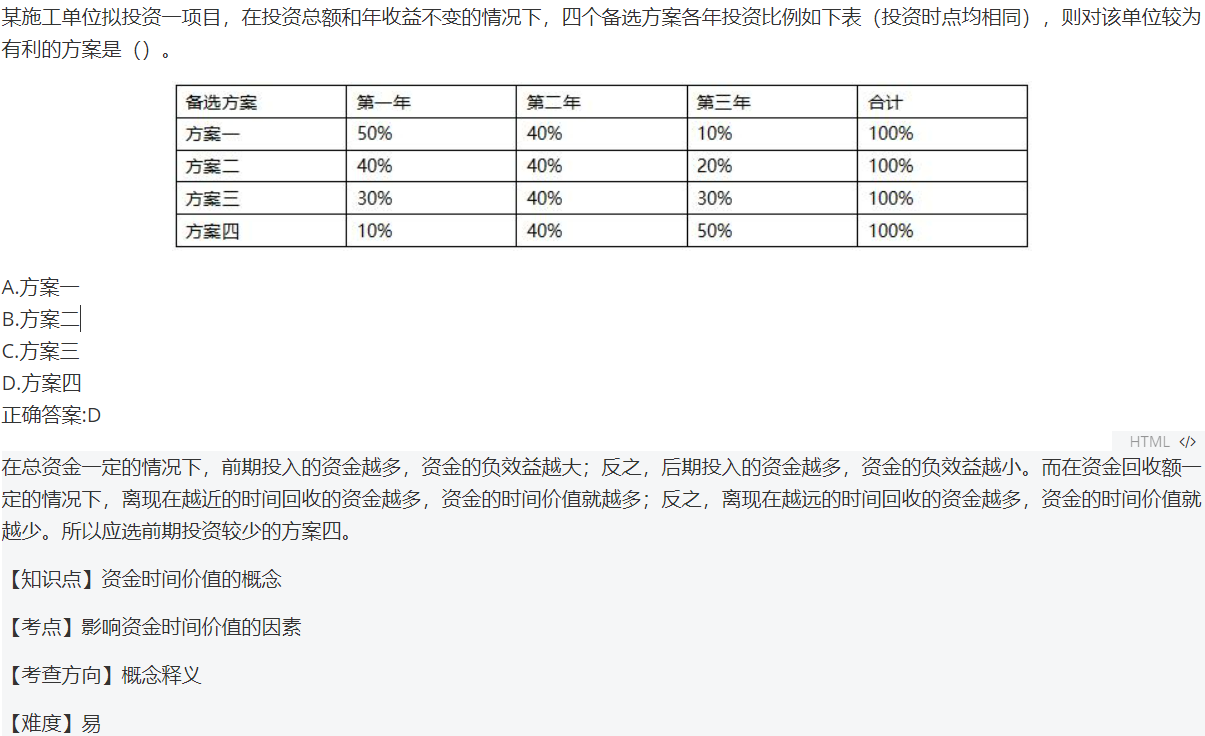
一、新建scrapy文件+配置setting
在配置好scrapy环境后在编译器终端参考如下图片中步骤建立一个scrapy文件。
注意:
- scrapy startproject 文件夹的名字
- scrapy genspider 爬虫文件名 爬取的网站域名(比如百度就是baidu.com)
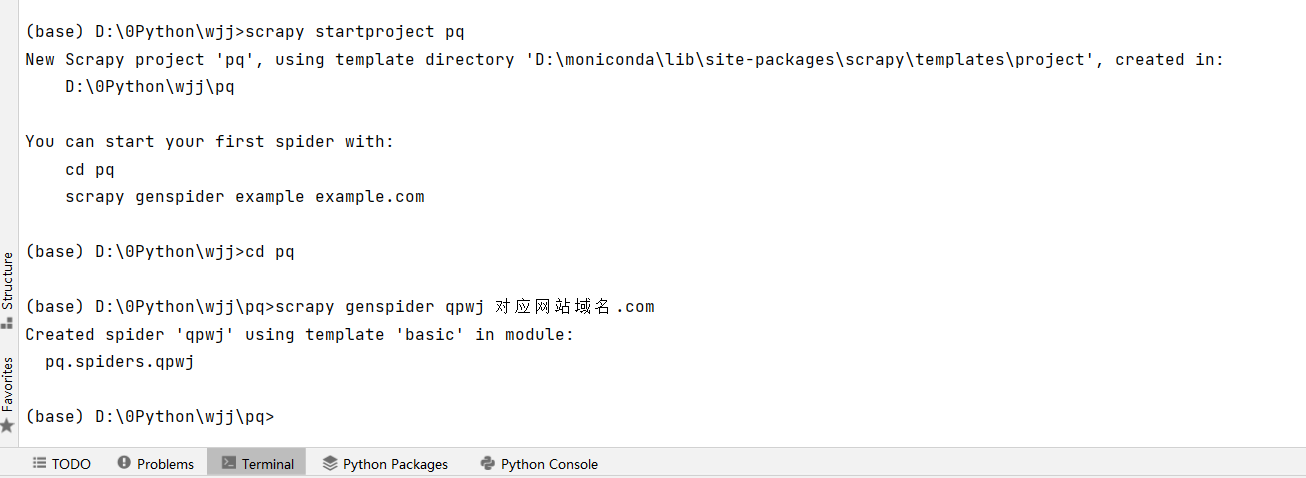
创建结果:
只需了解:
其中qpwj.py文件就是scrapy genspider 爬虫文件名 爬取的网站域名 —命令创建的,用来对网站的源代码进行解析(提取数据)
pipelines.py:数据管道,进行数据存储。
settings:配置scrapy文件,协调爬虫工作。
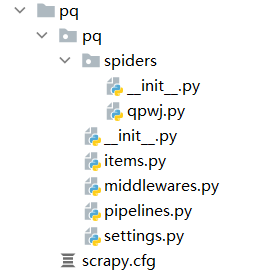
然后做这一步:
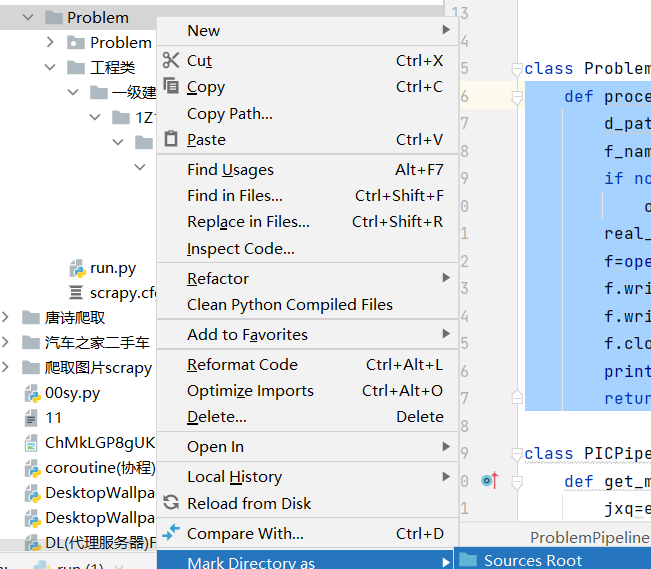
本案例setting文件中做如下配置,个别对应值自己去浏览器中查:
USER_AGENT = "*****" #浏览器中可查,按F12打开开发者模式点击network刷新网页点击网页文件找到USER_AGENT进行复制 ROBOTSTXT_OBEY = False #属于君子协议,改成False,就是爬,不管别人肯不肯 LOG_LEVEL = "WARNING" #少点无用的信息 DOWNLOAD_DELAY = 3 #这个一定要配好,控制延迟,不要太快,保护网站不崩 COOKIES_ENABLED = False #取消cook的自动维护 DEFAULT_REQUEST_HEADERS = { 'Accept': 'text/html,application/xhtml+xml,application/xml;q=0.9,*/*;q=0.8', 'Accept-Language': 'en', "Cookie":"****" #自己给个cookie,登录网站就会得到 } ITEM_PIPELINES = { #pipelines.py文件中的类的执行优先级,数字小的先执行 'Problem.pipelines.ProblemPipeline': 300, 'Problem.pipelines.PICPipeline':299 } IMAGES_STORE ="./" # 给一个当前文件夹作为路径做参考来存储文件两种方式新建执行srapy文件
- 新建一个runner.py(和scrapy.cfg同等级)文件:
#运行时右键run该文件就能执行Scrapy了 #tip: #scrapy genspider 爬虫文件名 爬取的网站域名 from scrapy.cmdline import execute if __name__ == '__main__': execute("scrapy crawl pqwj".split()) #注意pqwj替换为你的文件名2.终端输入:
scrapy crawl pqwj
二、确定&分析需求
把这个网站所有的题目都爬下来,分类存放,文件格式(markdown),对于题目图片也存放一份在对应文件夹中。
确定文件分类形式:

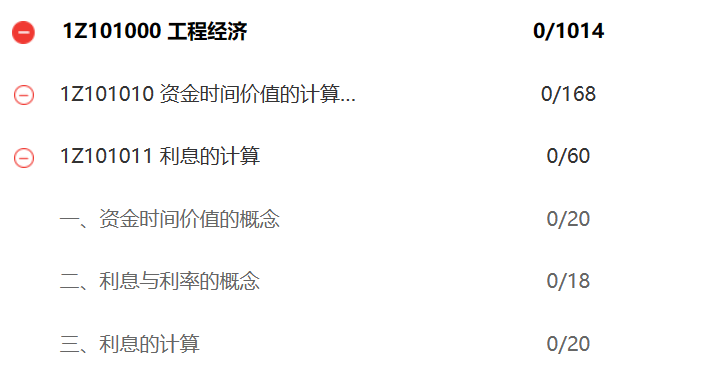
直接举例:
一、资金时间价值的概念中的20道题目要都存放在一、资金时间价值的概念.md文件中,并且把图片都存放在同等级的img文件夹中
文件路径:
工程类/一级建造师/1Z101000工程经济/1Z101010资金时间价值的计算及应用/1Z101011利息的计算/一、资金时间价值的概念/一、资金时间价值的概念.md
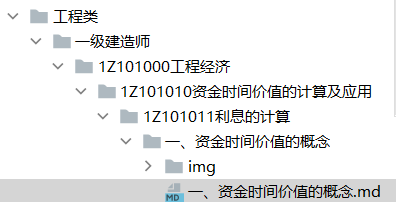
三、获取文件路径
发现first+second路径,而且有a标签,a标签中的href值是要用来进行拼接后来网页跳转的网址:
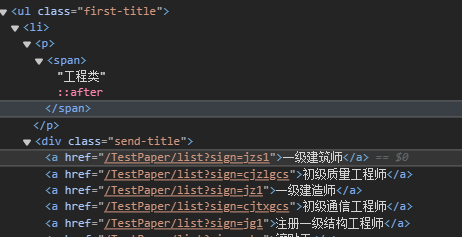
例如对含有一级建筑师文本的a标签进行href提取后进行网址拼接得到:
https://ks.wangxiao.cn/TestPaper/list?sign=jzs1
跳转到:
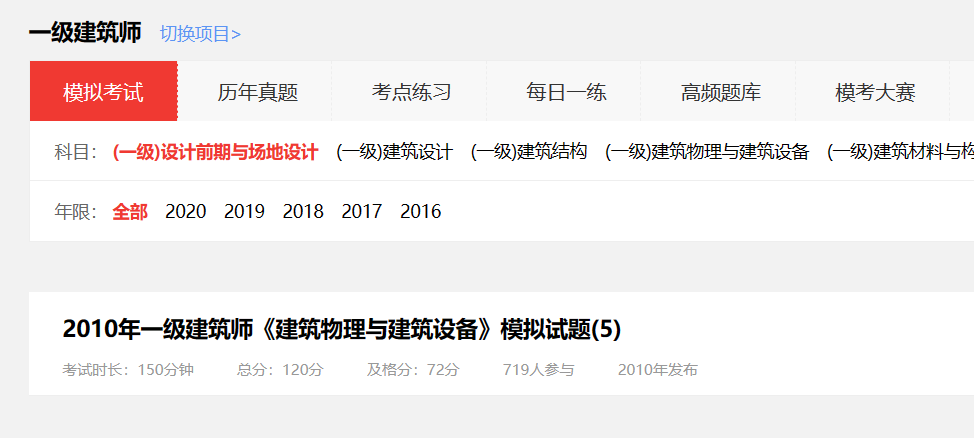
而我们的需求是跳转到:
https://ks.wangxiao.cn/exampoint/list?sign=jzs1
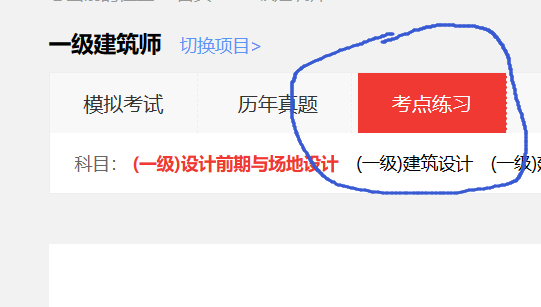
两个网址一对比:
拿到的跳转网址: https://ks.wangxiao.cn/TestPaper/list?sign=jzs1 目标: https://ks.wangxiao.cn/exampoint/list?sign=jzs1
就差一个单词,观察其他网址是否也是如此,回答为:YES
那么:
进行一级目录和二级目录提取,并且向这些类目下的考点链接发送请求(拼接路径后进行替换单词)
for i in all_li: onetitle = i.xpath(".//p/span//text()").extract_first() li_all_a=i.xpath(".//div[@class='send-title']/a") for j in li_all_a: twotitle = j.xpath(".//text()").extract_first() twourl = resp.urljoin(j.xpath("./@href").extract_first()).replace("TestPaper","exampoint") yield scrapy.Request( url=twourl, callback=self.Plistparse, meta={ "one":onetitle, "two": twotitle } )观察题库&分析源码&拿下路径
访问题库后一点开,发现它的文件路径这样的:
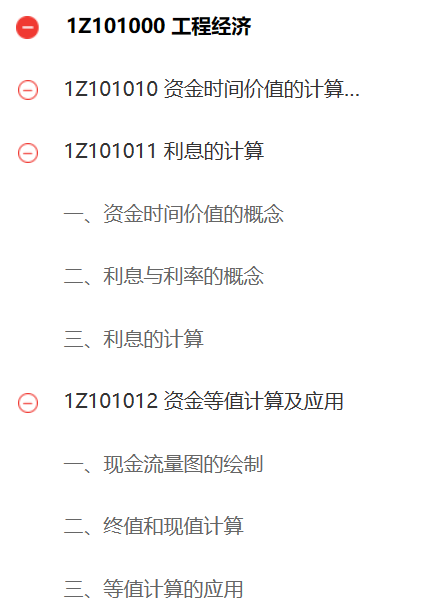
题目路径有的深有的浅:
工程类\一级建造师Z101000工程经济Z101010资金时间价值的计算及应用Z101011利息的计算\一、资金时间价值的概念\一、资金时间价值的概念.md 工程类\一级建造师Z101000工程经济\现金流量图的计算\现金流量图的计算.md
这个怎么办?难道一套网页路径结构,就要写一套代码吗?
NO NO NO
可以先拿最里面的路径名:
比如:工程类\一级建造师\1Z101000工程经济\1Z101010资金时间价值的计算及应用\1Z101011利息的计算\一、资金时间价值的概念\一、资金时间价值的概念.md (.md这个文件名啊)
最里面的路径名:一、资金时间价值的概念
然后再从这个路径往外一层层的去拿路径名。
观察发现所有最里层的路径名都会放在类名为section-point-item的ul下第一个li中:

那我们就可以拿下所有的ul(section-point-item)让后进行遍历,一个个的去获取完整路径:
ul(section-point-item)的上层路径名都存放在ul[@class=‘section-item’ or @class=‘chapter-item’]ul类名为section-item或者chapter-item的标签中的第一个li中。
利用语句
i指的是ul(section-point-item)
i.xpath("./ancestor::ul[@class='section-item' or @class='chapter-item']") 会获得一个列表: 比如:一、资金时间价值的概念 会得到: [1Z101000工程经济,1Z101010资金时间价值的计算及应用,1Z101011利息的计算]对应得从外到里的关系:
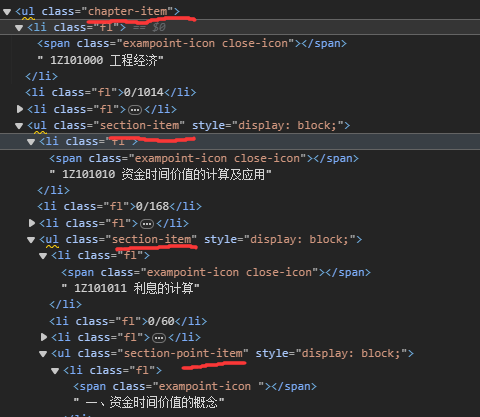
all_sectionpointitem=resp.xpath(".//ul[@class='section-point-item']") onetitle=resp.meta["one"] twotitle=resp.meta["two"] if all_sectionpointitem: for i in all_sectionpointitem: thretitle= "".join(i.xpath("./li[1]//text()").extract()).strip().replace(" ","") #top sign的作用见下文 top="".join(i.xpath("./li[2]//text()").extract()).strip().split("/")[1] sign="".join(i.xpath("./li[3]/span/@data_sign").extract()).strip().replace(" ","") subsign="".join(i.xpath("./li[3]/span/@data_subsign").extract()).strip().replace(" ","") r = [onetitle, twotitle] fj = i.xpath("./ancestor::ul[@class='section-item' or @class='chapter-item']") for j in fj: p_name="".join(j.xpath("./li[1]//text()").extract()).strip().replace(" ","") r.append(p_name) r.append(thretitle) dir_path="/".join(r)跳转做题,拿下题目
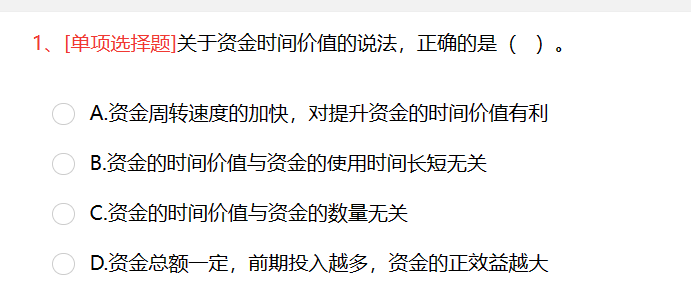
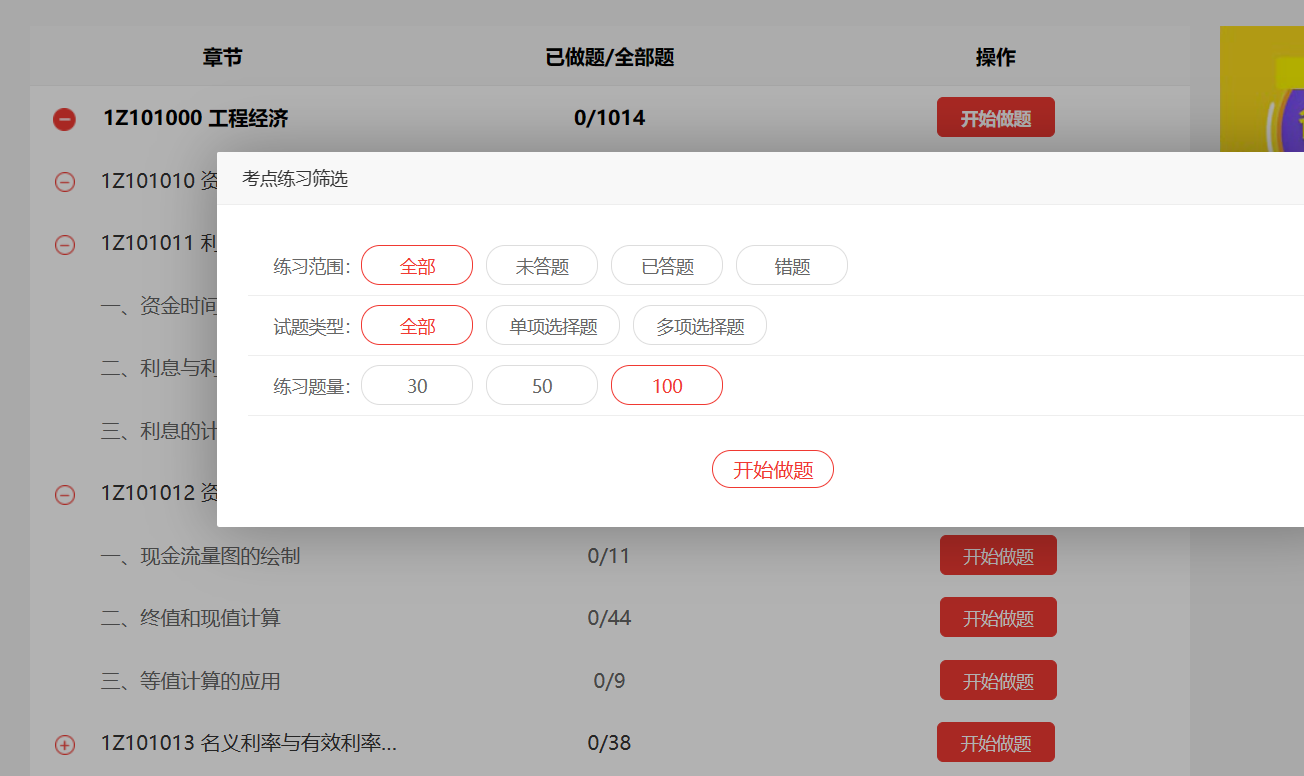
观察源码发现源码中两个网页没有可以发生跳转的链接,开始抓包:
在接收数据中发现POST请求:
题目数据存放在json中
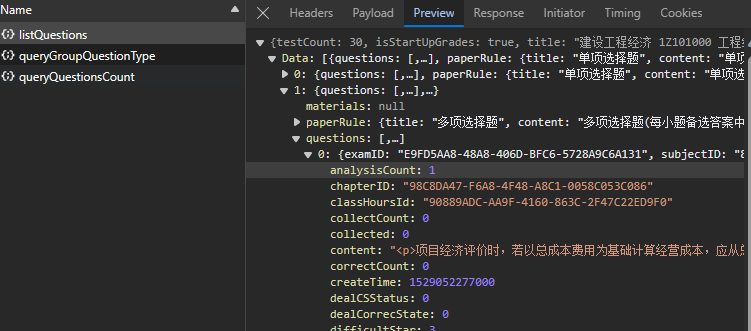


观察多个网页的请求发现:
Payload中: examPointType: "" (不变) practiceType: "2" (不变) questionType: "" (不变) sign: "jz1" (变化) subsign: "8cc80ffb9a4a5c114953" (变化) top: "30" (题目数量)
那top、sign、subsign在哪找呢?
观察
top:

sign、subsign:

那么就有法发送请求获取题目数据了:
data={ "examPointType": "", "practiceType": "2", "questionType": "", "sign": sign, "subsign": subsign, "top": top } yield scrapy.Request( url="https://ks.wangxiao.cn/practice/listQuestions", method="POST", body = json.dumps(data), callback=self.parse_qu, dont_filter=True, headers={"Content-Type":"application/json; charset=UTF-8"}, meta={ "LJ":dir_path, "filename":thretitle } )处理Json格式的题目数据
观察json文件格式发现在Data下存在多个字典每个字典下的questions(选择题)或者materials(材料题)键值内存放着题目信息。
#使用data.get("questions") 不存在"questions"键值就不会报错 #使用data["questions"] 不存在"questions"键值会报错 data.get("questions")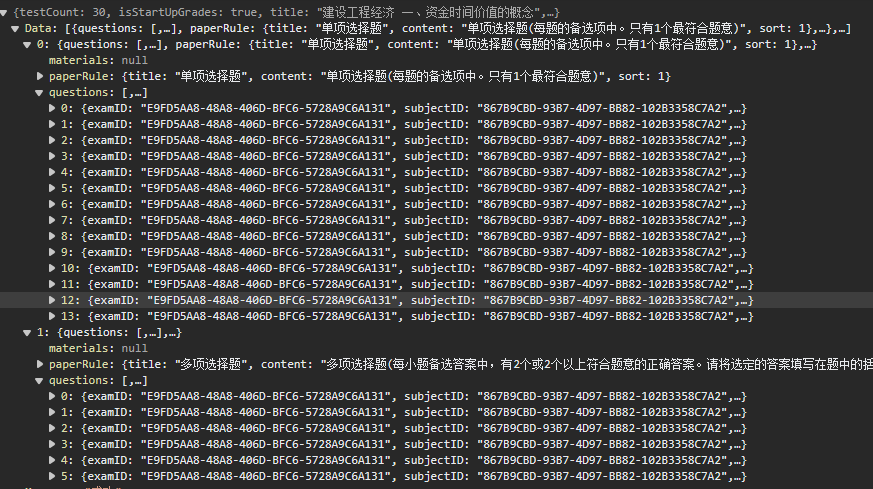
Datas = resp.json() #将json格式数据转为python对象 datas = Datas["Data"] #先从列表中拿下"Data"键下的题目数据 for data in datas: #遍历datas列表,列表中存在一个个字典 questions = data.get("questions") #获取"questions"键下的值,一个列表 if questions: for q in questions: #遍历列表,进行题目数据提取 s=self.process_q(q) #发送数据进行存储 yield {"path":resp.meta["LJ"], "name":resp.meta["filename"], "tm":s} else: materials = data.get("materials") #数据存放在"materials"列表中 for mater in materials: mater_content = mater["material"]['content'] questions = mater['questions'] qs = [] for q in questions: q_info = self.process_q(q) qs.append(q_info) mater_content=mater_content+"\n\n"+qs #发送数据进行存储 yield {"path":resp.meta["LJ"], "name":resp.meta["filename"], "tm":mater_content}def process_q(self,q): tm = q["content"] #题目内容 op = q['options'] #题目选项 jx = q['textAnalysis'] #题目解析 op_list = [] r_list = [] for o in op: xxx = o["content"] xx = o["name"] + "." + o["content"] op_list.append(xx) if o["isRight"] == 1: if o["name"] in "ABCDEFGHJK": r_list.append(o["name"]) else: xxx = xxx + "\n" r_list.append(xxx) else: pass s = tm + "\n" + "\n".join(op_list) + "\n" + "正确答案:" + "".join(r_list) + "\n" + jx+"\n" #组合题目内容,s就是一条完整的题目数据 return ss的内容示例(含图片的会有标签):
关于资金时间价值的说法,正确的是( )。 A.资金周转速度的加快,对提升资金的时间价值有利 B.资金的时间价值与资金的使用时间长短无关 C.资金的时间价值与资金的数量无关 D.资金总额一定,前期投入越多,资金的正效益越大 正确答案:A 影响资金时间价值的因素很多,其中主要有以下几点: 1.资金的使用时间。在单位时间的资金增值率一定的条件下,资金使用时间越长,则资金的时间价值越大;使用时间越短,则资金的时间价值越小。B选项错误。 2.资金数量的多少。在其他条件不变的情况下,资金数量越多,资金的时间价值就越多;反之,资金的时间价值则越少。C选项错误。 3.资金投入和回收的特点。在总资金-定的情况下,前期投入的资金越多,资金的负效益越大;反之,后期投入的资金越多,资金的负效益越小。而在资金回收额一-定的情况下,离现在越近的时间回收的资金越多,资金的时间价值就越多;反之,离现在越远的时间回收的资金越多,资金的时间价值就越少。D选项错误。 4.资金周转的速度。资金周转越快,在一定的时间内等量资金的周转次数越多,资金的时间价值越多;反之,资金的时间价值越少。A选项正确。 【知识点】资金时间价值的概念 【考察方向】概念释义 【难易程度】易
存储数据
存数据时pipelines要导入的包:
import os import scrapy from lxml import etree from scrapy.pipelines.images import ImagesPipeline
首先我们要考虑,材料题的数据中存在图片,我们得把图片下下来存放在对应文件夹里,并且对s中img标签进行src地址替换,让它根据本地文件路径显示图片。(注意是相对路径)
优先级较高的步骤,下载题目素材:
#ImagesPipeline ---继承ImagesPipeline中的方法get_media_requests、file_path、item_completed进行##方法重写 class PICPipeline(ImagesPipeline): #发送下载请求 def get_media_requests(self, item, info): jxq=etree.HTML(item['tm']) #xpath定位 srcs = jxq.xpath("//img/@src") for s in srcs: yield scrapy.Request(url=s,meta={"path":item['path'],"f_name":item['name'],"src":s},dont_filter=True) #确定文件保存位置和文件名字 def file_path(self, request, response=None, info=None, *, item=None): path = request.meta['path'] f_name = request.meta['f_name'] wj_name = request.meta['src'] real_name = wj_name.split("/")[-1] return path+"/"+"img"+"/"+real_name #下载结果处理---results def item_completed(self, results, item, info): #print(results) for i in results: status = i[0] #下载状态-True --False dic = i[1] if status: src = dic['url'] wzpath = dic['path'].split("/")[-2:] path = wzpath[0]+"/"+wzpath[1] item['tm'] = item['tm'].replace(src,path) print("替换为本地图片成功") return item #一定return item将数据传递下去优先级较低的步骤,把题目存下来:
def process_item(self, item, spider): d_path = item['path'] f_name = item['name'] #如果文件路径不存在 if not os.path.exists(d_path): # 创建它 os.makedirs(d_path) #完整路径 real_path = d_path+"/"+f_name+".md" f=open(real_path,mode="a",encoding="UTF-8") #写入题目 f.write(item['tm']) f.write("\n\n") f.close() print("存下一道题目!") return item














